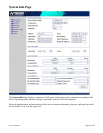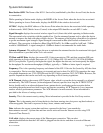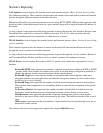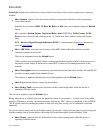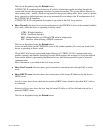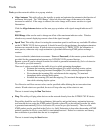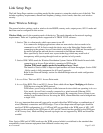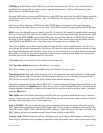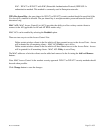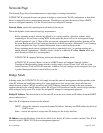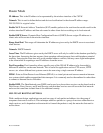Revision 04062009 Page 27 of 52
Link Setup Page
The Link Setup Page contains everything needed by the operator to setup the wireless part of the link. This
includes regulatory requirements, channel and frequency settings, device mode, data rates, and wireless
security.
Basic Wireless Settings
The general wireless settings, such as wireless device BSSID, country code, output power, 802.11 mode and
data rates can be configured in this section.
Wireless Mode: specify the operating mode of the device. The mode depends on the network topology
requirements. There are 4 operating modes supported in N-TRON 702-W software:
1. Station: This is a client mode, which can connect to an AP.
It is common for bridging applications when one non-wireless devices needs to be
connected to an AP. In Station mode the device acts as the Subscriber Station while
connecting to the primary Access Point which is defined by the SSID and forwarding all
the traffic to/from the network device connected to the Ethernet interface.
More specifically Station mode uses arpnat technology which may result lack of
transparency while passing-through broadcast packets in bridge mode.
2. Station WDS: WDS stands for Wireless Distribution System. Station WDS should be used while
connecting to an Access Point which is operating in WDS mode.
*Station WDS mode enables packet forwarding at layer 2 level.
The benefit of Station WDS is improved performance and faster throughput. Station WDS
- Bridge mode is fully transparent for all Layer2 protocols.
Refer to the Network Settings section for detailed Bridge network mode configuration
information.
3. Access Point: This is an 802.11 Access Point mode.
4. Access Point WDS: This is an 802.11 Access Point which allows layer 2 bridging with Station
WDS devices using the WDS protocol.
WDS allows you to bridge wireless traffic between devices which are operating in Access
Point mode. Access Point is usually connected to a wired network (Ethernet LAN)
allowing wireless connection to the wired network. By connecting Access Points to one
another in an Extended Service Set using the WDS, distant Ethernets can be bridged into
a single LAN.
It is very important that network loops not be created with either WDS bridges or combinations of
wired (Ethernet) connections and WDS bridges. Tree or Star shape network topologies should be
used in all WDS configurations (i.e. if AP2 and AP3 are specified as the WDS peers of AP1, AP2
should not be specified as the WDS peer of AP3 and AP3 should not be specified as the WDS peer
of AP2 in any case). Mesh and Ring network topologies are not supported by WDS and should be
avoided.
Note: Station WDS and AP WDS mode uses the WDS protocol which is not defined as the standard thus
compatibility issues between equipment from different vendors may arise.



